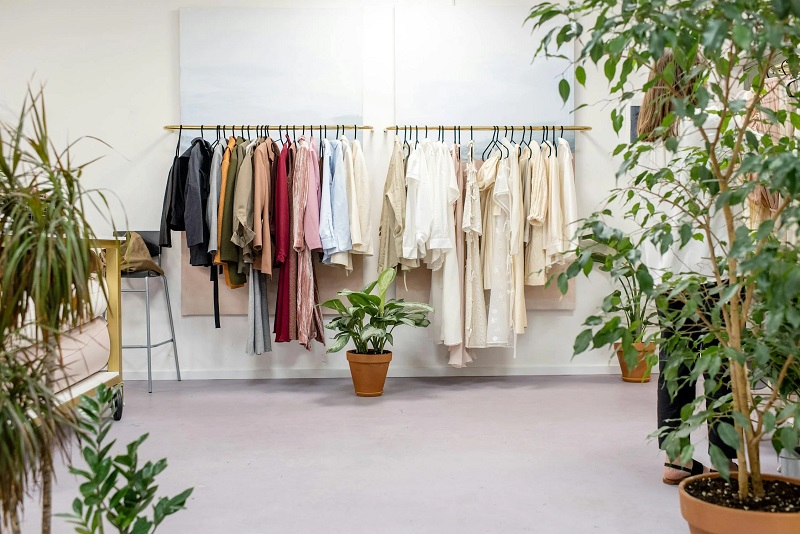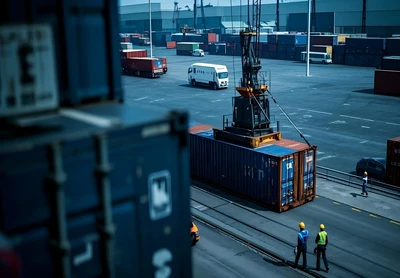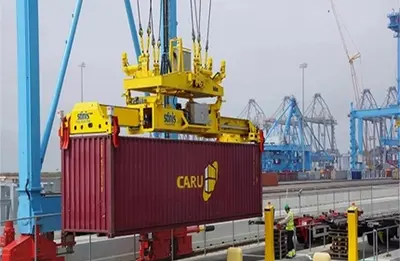
When it comes to fashion, timing is everything — and if you're planning to import clothes from China to the UK, you’re about to unlock huge opportunities! But how do you get it right without blowing your budget or getting stuck in endless customs paperwork?
Let’s walk through it, step-by-step.

China has been the world’s largest clothing manufacturer for years — and there’s a reason for that.
Low manufacturing costs
Huge variety of styles and materials
Flexible minimum order quantities (MOQs)
Rapid production times
Customizable options (private label, branding)
Whether you’re starting your own fashion brand or want to sell on marketplaces like Amazon, eBay, or your own online store, importing from China gives you a competitive edge.
Before you start clicking "order," you need to know the rules.
Labeling Requirements: Clothes must display fiber content, country of origin (e.g., “Made in China”), care instructions, and sizing information.
Product Safety: Children’s clothing must meet extra safety regulations (no choking hazards, flammable materials, etc.).
Trade Laws: Some clothing materials (like certain animal-based products) may be restricted.
Tip: Always check with the UK’s Trading Standards and HMRC for up-to-date guidelines.
Not all suppliers are created equal. Here’s where you need to be picky!
Use B2B Platforms:
Alibaba
Made-in-China
Global Sources
DHgate (for smaller orders)
Attend Trade Shows (even virtually):
Global Sources Fashion Show
Key Things to Check:
Verified business licenses
Years of experience
Customer reviews
Factory audits (if available)
Pro Tip: A manufacturer who specializes in clothing is better than a generic supplier who sells "everything."
Always ask for samples!
You want to check:
Material quality
Stitching and construction
Size accuracy
Color consistency
Samples may cost you a little upfront, but trust me — it’ll save you way more in the long run.
In China, negotiation is expected — not rude!
Bulk discounts: The bigger your order, the better your pricing.
Payment terms: Typically, you’ll pay 30% upfront and 70% after production.
Lead times: Get clear timelines for production and shipping.
Watch out for hidden fees (like packaging charges or fabric upgrade costs)!
Incoterms define who’s responsible for what during shipping.
Here are some you need to know:
EXW (Ex-Works): You handle everything after pickup.
FOB (Free on Board): Supplier delivers to the ship; you handle shipping from port.
CIF (Cost, Insurance, Freight): Supplier covers shipping and insurance to your UK port.
DDP (Delivered Duty Paid): Supplier handles everything, including customs and taxes.
If you’re new, starting with DDP or FOB is often the safest bet!
Depending on your budget and timeline, you can choose:
| Shipping Method | Best For | Delivery Time | Cost |
Air Freight | Small, urgent orders | 1-5 days | High |
Sea Freight (FCL) | Full container loads | 30-40 days | Low (per unit) |
Sea Freight (LCL) | Less than container load | 30-40 days | Medium |
Express Courier (DHL/FedEx) | Samples or small shipments | 3-7 days | Very high |
When your clothes arrive in the UK, you’ll pay:
Import Duty:
Usually around 12% for clothing, but check HS Codes.
VAT (Value Added Tax):
20% on the total cost (goods + shipping + duty).
Important:
Register for an EORI number if you don’t have one. It’s free and necessary for customs clearance.
You have two main options:
DIY Customs Clearance:
You file paperwork yourself (good for small orders).
Hire a Customs Broker:
They handle the mess, ensure everything’s compliant, and prevent delays. Worth it for big shipments!
Picking the right freight forwarder can make or break your import process. Think of them as your travel agent — but for your clothes!
Here’s what a great freight forwarder like CUC Freight will do for you:
Handle all shipping logistics
Manage customs clearance
Offer flexible shipping options (air, sea, express)
Keep you updated throughout the journey
How to Choose the Best Freight Forwarder:
Experience Matters: Pick companies familiar with clothing imports.
Transparent Pricing: Avoid hidden fees and surprise charges.
Good Communication: You want fast responses and clear updates.
Global Network: They should have strong connections in both China and the UK.
Customizable Services: Look for options like DDP (Delivered Duty Paid) if you prefer a hands-off approach.
| Challenge | How to Avoid It |
Delayed production | Set firm deadlines and check progress regularly. |
Quality issues | Inspect samples and do pre-shipment inspections. |
Customs delays | Ensure correct HS codes and paperwork. |
Unexpected costs | Confirm all fees in writing before placing orders. |
Start Small: Test suppliers with small orders before scaling up.
Stay Organized: Keep contracts, invoices, and shipping docs tidy.
Communicate Clearly: Confirm everything in writing (delivery times, payment schedules, specs).
Plan Ahead: Always allow buffer time — shipping delays happen!
Work with Professionals: Freight forwarders, customs brokers, and sourcing agents can save you major headaches.
Copyright Statement:
All images in this article have been used with diligent efforts to verify sources. Regarding copyright matters:
1️⃣ Rights holders are hereby advised to assert your claims via the contact information at the bottom of this article
2️⃣ We shall legally cooperate in replacing, removing disputed content, or negotiating authorized usage
3️⃣ Third-party users reproducing this article must independently verify image sources and licensing status
 Door-to-Door Dominance: Slash China-US Air Freight Costs While Beating Delivery DeadlinesMarch 17, 2025Cut China-US air freight costs 18-35% while accelerating door-to-door delivery. Master cargo hacks, forwarder negotiations & hybrid logistics. Free tools: density calculator + customs checklist.view
Door-to-Door Dominance: Slash China-US Air Freight Costs While Beating Delivery DeadlinesMarch 17, 2025Cut China-US air freight costs 18-35% while accelerating door-to-door delivery. Master cargo hacks, forwarder negotiations & hybrid logistics. Free tools: density calculator + customs checklist.view Land and Sea Connections: The Intermodal Dynamics of Freight from China to CanadaMarch 19, 2024In the intricate world of international trade, the connection between land and sea plays a pivotal role in ensuring the seamless flow of goods. This article explores the intermodal dynamics of freight...view
Land and Sea Connections: The Intermodal Dynamics of Freight from China to CanadaMarch 19, 2024In the intricate world of international trade, the connection between land and sea plays a pivotal role in ensuring the seamless flow of goods. This article explores the intermodal dynamics of freight...view The Rise of E-Commerce: Impact on China to USA Courier ServiceApril 9, 2025With the popularization of the Internet and the rapid development of science and technology, e-commerce is booming in the world. As an important player in e-commerce, China's rise has not only cha...view
The Rise of E-Commerce: Impact on China to USA Courier ServiceApril 9, 2025With the popularization of the Internet and the rapid development of science and technology, e-commerce is booming in the world. As an important player in e-commerce, China's rise has not only cha...view Attention please! Shanghai Port is closed due to heavy fog | Shipping company issues delay noticeApril 22, 2024Affected by the humid and warm air flow, heavy fog occurred in the areas along the Yangtze River Estuary in Shanghai on April 15. The visibility in the waters of the Yangtze River Estuary was less tha...view
Attention please! Shanghai Port is closed due to heavy fog | Shipping company issues delay noticeApril 22, 2024Affected by the humid and warm air flow, heavy fog occurred in the areas along the Yangtze River Estuary in Shanghai on April 15. The visibility in the waters of the Yangtze River Estuary was less tha...view